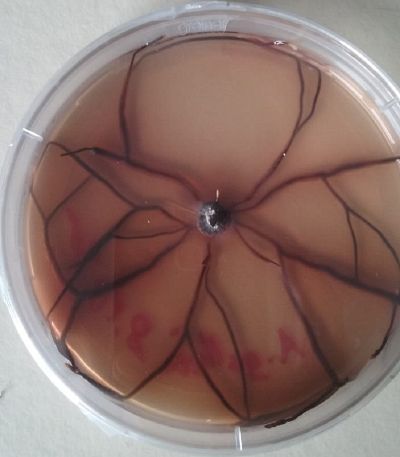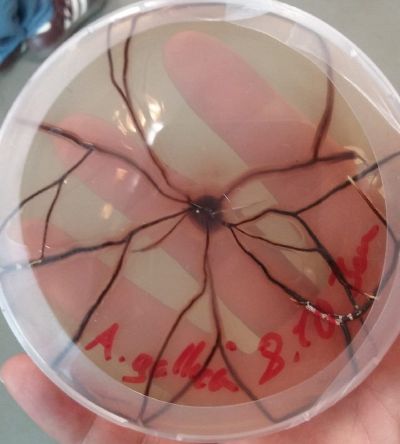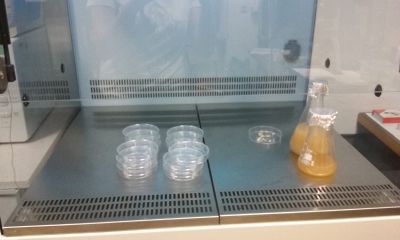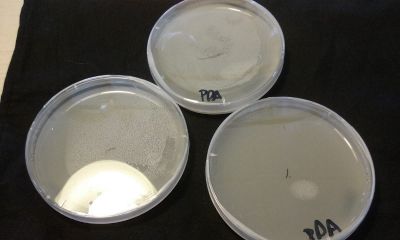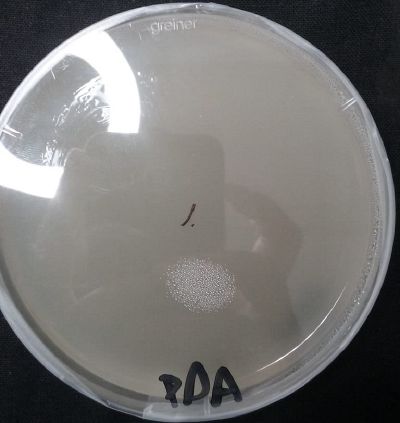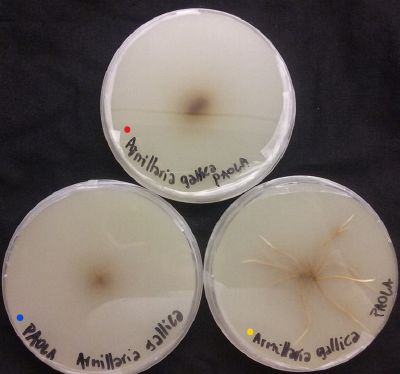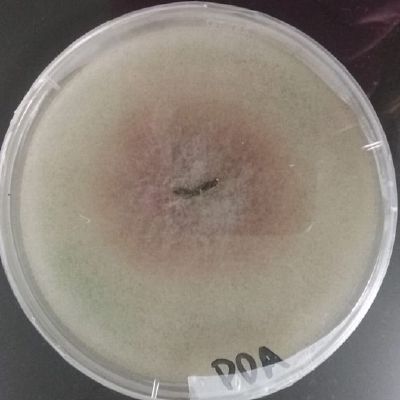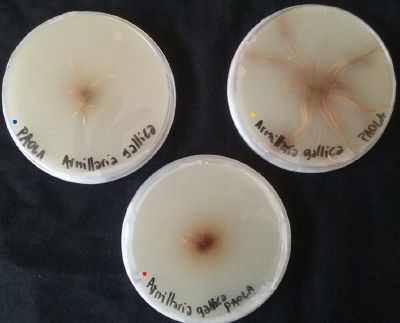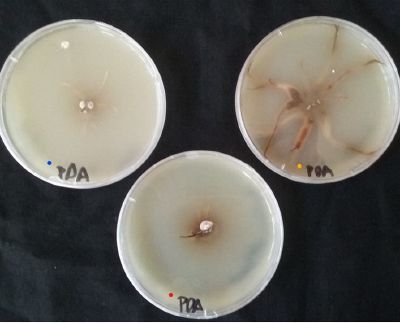Paola Stephania/Specimen adoption 2: ''Armillaria Gallica''.: Difference between revisions
No edit summary |
No edit summary |
||
| Line 4: | Line 4: | ||
*Day 1: | *Day 1: | ||
An original sample is taken from a specimen of Jan Glöckner ''(Armillaria Gallica.)'' in order to learn about the cultivation of the specimen. | |||
[[File:wd3.jpg|400px]] [[File:wd4.jpg|400px]] | |||
Medium : | |||
'''Potatoe Dextrose Agar (PDA)''' | '''Potatoe Dextrose Agar (PDA)''' | ||
Revision as of 21:15, 25 November 2018
Armillaria Gallica
Link to Wikipedia: https://es.wikipedia.org/wiki/Armillaria_gallica
- Day 1:
An original sample is taken from a specimen of Jan Glöckner (Armillaria Gallica.) in order to learn about the cultivation of the specimen.
Medium :
Potatoe Dextrose Agar (PDA)
- Diced and boiled potatoes - 150g - Dextrose - 7g - In 500ml of water, boil 150g of potatoes. Strain out the solids, bring the solution back to 500ml with water, then add remaining ingredients. Five grams of potatoes flakes can be used as a substitute.
For the preparation were used: - 380 ml of diced and boiled Potatoes - 7 g of Dextrose - 7.6 g of Agar
- Day 2:
- Whit the Potatoe Dextrose Agar (PDA) made on the first day we cultivate/make a clone of Armillaria Gallica.
The first three samples are left in different environments in order to test which kind of conditions they prefer in order to grow. The first sample is left in a sunny place with a temperature of around 18°C, the second sample is left in a partially illuminated environment with a temperature of around 16°C-17°C and the third sample is left in total darkness with a temperature of around 19°C.
The fourth sample is left in the laboratory in total darkness (possibility of light if the doors of the closet are open).
- Day 10:
- The sample left in a sunny place (blue spot) haven't grown much, an initial growth like roots can be seen at the bottom of the sample. The second sample (red spot) have grown a little more than the sample left in the sunny spot, but at the bottom, any "root" can be seen. The sample left in total darkness have growth a lot, a shape in form of roots is almost all over the Petri box.
The specimen left in the laboratory hasn't grown, and it seems that it has been contaminated with another specimen. (The temperature of the laboratory oscillates around the 16°C.
General conclusions: It seems that the dark places with a temperature higher than 18°C are ideal for this specimen.
- Day 15:
After 15 days, the sample left in a sunny place (blue spot) has grown a lot in comparison to it first 10 days, a growth like roots can be seen at the bottom of the sample. The growth of the second sample (red spot) seems to be a constant. The growth of the sample left in total darkness seems to be constant too, and a brown color is starting to appear around the root shapes.
General conclusions: The specimen likes dark environments to growth with temperatures around or higher than 18°C. The temperature seems to be a decisive factor in the growth of this specimen, this according to the exponential growth of the first specimen seen in the last 5 days.
The sample left in the laboratory is no longer a subject of study because of the contamination inside the sample.
